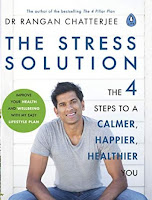Our Our Way to a Vaccine - Part 2
Today's blog is a follow-up to last week's first part blog about "On Our Way to a Vaccine, which is based upon an excellent article in the New York Times Sunday Magazine. [ Entitled: "The Development of a Vaccine for COVID-19," June 14, 2020, Page 36-43, 56. ]
So, from where we left off last week - - - Dan Barouch says, "That still leaves the question as to how to get that [aforementioned ] gene into human cells."(1) He suggests that one way to do this is a vector-based vaccine.
- "A vector-based vaccine uses a delivery vehicle --- one example would be a combined adenovirus, or a "harmless virus" carrier, like a common cold --- to deliver the protein into a person's cells."
George Yancopoulos says, "This gene-based approach was used in the case of Ebola. (2)" But Siddhartha Mukherjee further says, "There is also the idea of further ditching "harmless virus" carrier (sic) altogether and just using a snippet of a viral gene, by itself, as an inoculum , (3)" or a substance used for the inoculation.
When SARS CoV-2 genome came on the scene it became possible to design a viral-gene snippet. (4) Researchers still don't understand how the body processes the viral-gene without a carrier and produces viral immune output from it. It is beieved it is because the body sees the foreign viral protein and treats it as an invader and produces antibodies to fight it. (5)
It was announced today that there has been a good deal of success in giving patients who are ill with COVID the blood plasma of those that have successully healed from the virus and lived. This is very similar to the above forementioned approach.
Another important factor in the search for an efficient vaccine is the fact that this vaccine has to work across a broad spectrum of ages to be effective. The good news is that pharmaceutical companies have much experience with this via the common flu vaccine.
But Mukherjee says, " . . . elderly people need particular protection, and we need to understand how much of the vaccine, or ones like it, are eliciting long-term immunity in the elderly, where the immune system might already be somewhat attenuated (reduced) in its response." (6)
_________________ To be continued in Part 3 _______________________
Contributors for this Sunday Magazine NYTimes article were:
Dan Barouch, Director, Center for Virology and Vaccine, Beth Israel Hospital, Boston, MA.
Margaret (Peggy) Hamburg, Foreign Secretary, National Academy of Medicine; previous Commissioner of the F.D.A. from 2009 to 2015.
Siddhartha Mukerjee, Associate Professor of Medicine, Columbia University.
Susan R. Weiss, Professor and Vicechairwoman of the Department of Microbiology at the University of Pennsylvania, and the co-director of the Penn Center for Research on Coronavirus and Other Emerging Pathogens.
George Yancopulos, Co-founder, President and Chief Scientific Officer of Regeneron.
________________________________________________________________________________________
(1) "The Development of a Vaccine fro COVID-19," June 14, 2020, Page 39.
(2) Ibid.
(3) Ibid.
(4) Ibid.
(5) Ibid.
(6) Ibid.

Comments
Post a Comment